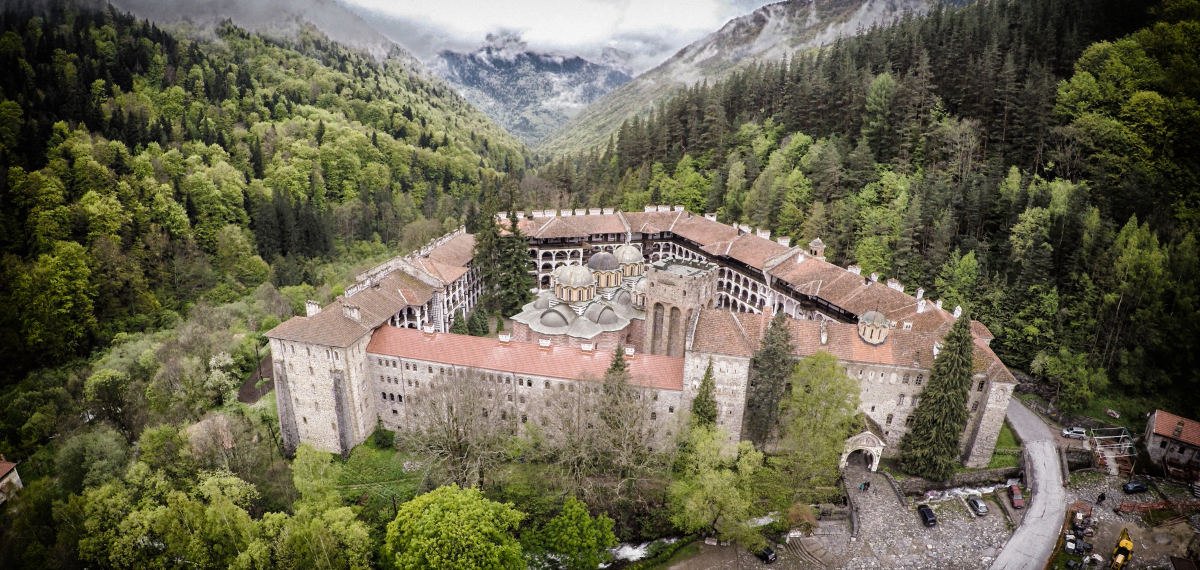Rila Monastery
Overview
The Rila Monastery “St. Ivan Rilski” is a Bulgarian stauropegial monastery, among the most important cultural monuments in Bulgaria, a symbol of the country, included in the UNESCO World Heritage List. It is located in southwestern Bulgaria, Kyustendil district, Rila municipality. It was founded in the 10th century by St. John of Rila the Wonderworker on the upper reaches of the Rila River. The current monastery is located near the village of Pastra - not far from the place of its original construction. The Rila River flows along it. This is the largest monastery in Bulgaria - 5 floors, 4 of which are visible. This feature of the building is explained by the restrictions imposed by the Ottoman government in 1834, when the current buildings were built. The museum is located on the ground floor. The monastery "St. John of Rila" was built on the site of an old fasting house in 927 - 941 by St. John of Rila the Wonderworker (according to some authors - by his students) in the Rila Mountains. In the yard of today's monastery in 1335 a defensive tower and a small one-nave church were built by the local feudal ruler Protosevast Hrelio. The tower is the oldest preserved building in the monastery complex. At the top of the tower is the chapel "Holy Transfiguration" with valuable frescoes from the 30s of the 14th century. Since its founding, the monastery has become a literary and educational center. Neofit Rilski developed a great pedagogical activity in it, who during the revival founded a cell school here. The monastery provides shelter to great Bulgarian revolutionaries, including Vasil Levski, Ilio Voivoda, Gotse Delchev, Peyo Yavorov and others. In 1778 the monastery "St. John of Rila ”fell victim to a wildfire. It was rebuilt in 1784 by Alexi Rilets, who in 1816-1819 designed and built the east, north and west wings. A significant part of the monastery was burned down again in 1833, and its restoration was again carried out by Alexi under the leadership of the then abbot Joseph the Builder. In 1840 a new iconostasis of the church was made by Petar Filipov, Anton Stanishev and Dimitar Stanishev. According to testimonies of American missionaries who visited the monastery in 1862, there are 350 monks there, and on the eve of Easter there are 400 guests. Today the ensemble of the monastery covers an area of 8800 m², of which 5500 m² built-up area. The monastery wings, built at different times on the 4th and 5th floors, surround on all sides the only courtyard in the shape of an irregular pentagon. The Rila Monastery, the Hrelov Tower, the church, the monastery buildings and the Church of St. Luke were declared in 1927 "folk antiquities" (State Gazette, issue 69 of 1927). In 1968, the Hrelov Tower was declared an architectural monument of culture from the Middle Ages (State Gazette, issue 77 of 1968). At the 7th session of the UNESCO World Heritage Committee, held from 5 to 9 December 1983 in Florence (Italy), the Rila Monastery was declared a World Heritage Site. Manuscripts, old printed books, documents from the 14th century to the 19th century are kept in the Rila Monastery, and in the museum - many ancient objects, such as church utensils, wands, icons, weapons, coin collection, etc. In 1992 the Rila Monastery; The tomb of St. John of Rila, including the church "Assumption of St. John of Rila ”and the fasting house St. John of Rila; The hermitage "St. Luke", including the churches "St. Luke" and "Holy Intercession of the Virgin" and the cell school; the Orlitsa convent with the church “St. St. Peter and Paul ”; and the Church of the Assumption have been declared group architectural, historical and artistic complexes of national importance, and the Pchelino convent - a group architectural and historical complex of local importance.
Recommended
- Cave of Ivan Rilski
- St. Luke's Church
- Church of St. Theodosius of Tarnovo
- Kirilova Polyana
- Church of the Assumption of St. The Virgin


 Bulgarian
Bulgarian Romanian
Romanian



